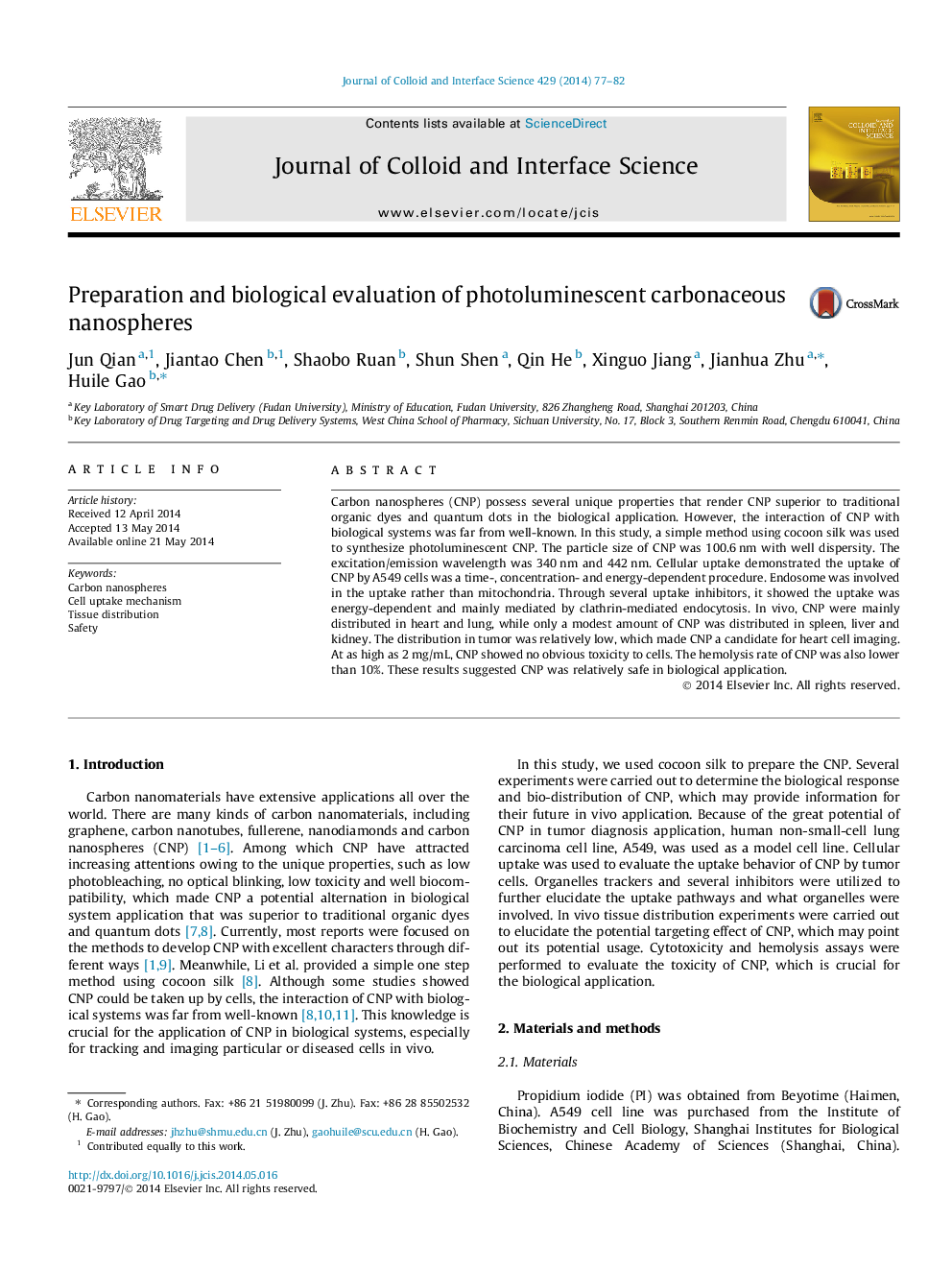| Article ID | Journal | Published Year | Pages | File Type |
|---|---|---|---|---|
| 607204 | Journal of Colloid and Interface Science | 2014 | 6 Pages |
•CNP possessed low cytotoxicity and well hemocompatibility.•CNP was taken up into A549 cells mainly through clathrin-mediated endocytosis.•CNP distributed highest in heart than in other tissues.
Carbon nanospheres (CNP) possess several unique properties that render CNP superior to traditional organic dyes and quantum dots in the biological application. However, the interaction of CNP with biological systems was far from well-known. In this study, a simple method using cocoon silk was used to synthesize photoluminescent CNP. The particle size of CNP was 100.6 nm with well dispersity. The excitation/emission wavelength was 340 nm and 442 nm. Cellular uptake demonstrated the uptake of CNP by A549 cells was a time-, concentration- and energy-dependent procedure. Endosome was involved in the uptake rather than mitochondria. Through several uptake inhibitors, it showed the uptake was energy-dependent and mainly mediated by clathrin-mediated endocytosis. In vivo, CNP were mainly distributed in heart and lung, while only a modest amount of CNP was distributed in spleen, liver and kidney. The distribution in tumor was relatively low, which made CNP a candidate for heart cell imaging. At as high as 2 mg/mL, CNP showed no obvious toxicity to cells. The hemolysis rate of CNP was also lower than 10%. These results suggested CNP was relatively safe in biological application.
Graphical abstractFigure optionsDownload full-size imageDownload high-quality image (295 K)Download as PowerPoint slide
